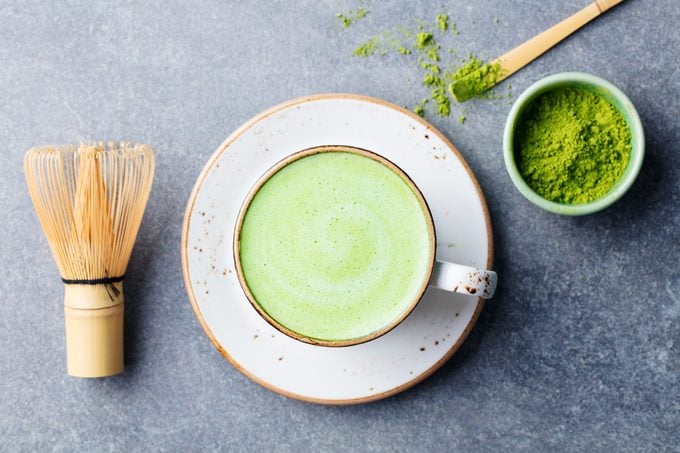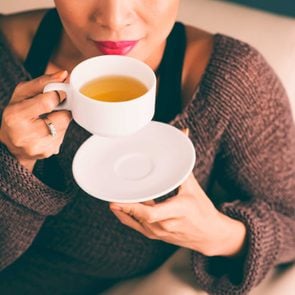What Is Matcha Tea? Nutrients, Benefits, and How to Drink It
Updated: May 18, 2021
This nutrient-rich green tea promises lots of health benefits. It's rich in history and taste, but is it worth the health hype? Here's what the science says.
On This Page
The growing popularity of matcha tea
If you’ve been ever been offered tea, you know there are plenty of choices. Black tea and green, oolong and herbal—there’s a tea for every taste bud.
One trendy variety is matcha tea. A type of green tea, matcha tea is becoming more and more popular.
The global matcha tea market was $1.63 billion in 2018 and is expected to reach $2.26 billion, according to a report by Grand View Research.
Expanding interest in natural products and the increasing popularity of healthy beverages are expected to fuel the growth, according to the research firm.
Here’s the scoop on the interesting on what is matcha, how it’s made, the benefits, and how to drink this vibrant green tea.
(Find out more about what happens when you drink tea daily.)
What is matcha tea?
Matcha tea is bright green. It has a sweet, grassy, earthy flavor.
Like all teas except herbal teas, matcha comes from the Camellia sinensis plant. The difference in all teas is how the leaves are processed.
For matcha tea, the tea bushes are grown in a special way. For about three to five weeks before the leaves are harvested, the plants are covered with canopies in order to keep out the sun.
This triggers the plants to make more chlorophyll, which is a green pigment in the plant. That makes the leaves darker, which changes the taste and texture of the resulting tea and increases the level of some nutrients.
The leaves are hand-picked then steamed, de-stemmed, air-dried, and ground into a bright green powder. This fine powder is whisked with warm water to make tea.
(Find out if you can drink tea while fasting.)
Origins of matcha tea
Matcha tea has its roots in China and Japan where tea drinking is an important part of cultural life.
Matcha tea surfaced during the Tang Dynasty in China (618-907). People first steamed tea leaves into bricks, then later turned it into powder to prepare tea.
A Japanese monk named Myoan Eisai was enthralled with this tea when he was in China studying Zen Buddhism. He brought seeds back with him to Japan and wrote a book on tea.
Monks started drinking matcha to stay awake during meditation and because they believed it had health benefits. (Here are some ways to sneak meditation into your life every day.)
Drinking matcha became the focus of traditional Japanese tea ceremonies in which preparing tea is the focus of what has become a spiritual and meditative practice.
(Find out if olive leaf tea is the new matcha.)
Matcha tea nutrition
One serving of matcha tea requires about 1 teaspoon (4 grams) of matcha powder. One example of a plain matcha powder tea has the following nutrients:
Calories: 15
Protein: 1 g (2 percent of the daily recommended value, or DV)
Carbohydrates: 3 g (1 percent DV)
Fiber: 1 g (4 percent DV)
Calcium: 10 mg (.8 percent DV)
Iron: 0.2 mg (2 percent DV)
Potassium: 50 mg (1 percent DV)
Green tea, including matcha, is also filled with antioxidants. It’s high in epigallocatechin gallate (EGCG), a substance experts believe may protect cells and fight disease. One study published Journal of Chromatography A found that matcha contains at least three times more EGCG than most green tea brands.
(Matcha vs. green tea: here’s what else is different.)
Matcha also contains a compound called L-theanine, which is believed to have a calming, relaxing effect without making you drowsy.
And matcha does keep you awake. It has about 64 mg of caffeine per cup. That’s compared to plain green tea which has about 18 mg of caffeine per cup.

Benefits of drinking matcha and other teas
From heart health to cancer prevention, fans often tout the health benefits of green tea.
Some research suggests that both green and black tea might help prevent cardiovascular disease. The teas may have positive effects on heart disease risk factors such as blood pressure and cholesterol, according to a 2013 research review published in Cochrane Database of Systematic Reviews.
Green and black tea may lower the risk of coronary heart disease and stroke by between 10 percent and 20 percent, according to a study in Food and Function.
According to a study published in 2017 in the Journal of Oral and Maxillofacial Pathology, green tea has an antibacterial effect that could reduce cavity-forming bacteria in your mouth.
Many studies have looked into whether green tea might be able to prevent or fight cancer. A 2020 analysis of more than 140 studies, published in Cochrane Database of Systematic Reviews found inconsistent results when it came to green tea and its effects on cancer, however.
(Learn which teas may help you lose weight.)
Risks or side effects
Green tea like matcha is believed to be safe when used in moderation, according to the National Center for Complementary and Integrative Health.
But because matcha has caffeine, be aware of how much you drink. An adult shouldn’t have more than 400 mg of caffeine per day, so that means no more than about 6 cups of matcha tea per day.
(Matcha vs. coffee: find out which is better for you.)
Pregnant and nursing moms should have no more than 300 mg of caffeine daily, so that’s about 4 1/2 cups of matcha tea.
The U.S. Food and Drug Administration warns that caffeine can cause symptoms such as insomnia, jitters, nausea, headache, upset stomach, anxiousness, and a fast heart rate.
Tea plants can absorb heavy metals like lead, arsenic, and cadmium, as well as pesticides from the surrounding soil. Tea plants where industrial pollution is more common are more likely to be contaminated.
Many companies selling matcha will list information about where their matcha is grown. They will list quality standards and certification of radiation testing results so you can make an informed decision when shopping.
(Beware of these hidden sources of caffeine.)
How to drink matcha tea
In traditional matcha, there’s no teabag involved.
To make matcha tea, use about a teaspoon or so of powder and put it into a small bowl. You may want to sift the powder into a bowl before adding water, but that’s not a necessary step.
Use hot (not boiling) water. Traditionally, matcha tea is made using a bamboo whisk but a regular whisk or even a spoon will work.
Start by whisking whisk just enough water to dissolve the powder, then add more water to make the strength you like. Whisk until a frothy foam appears on the top. Pour the tea into a cup or drink directly from the bowl.
(Here’s what happens when you switch from coffee to tea drinking.)
There are typically two types of matcha:
Usucha: The most popular way to prepare it, this means “thin tea.” It usually is watery with a thin, foamy layer on top.
Koicha: Meaning “thick tea,” this uses double the amount of tea and about half the amount of water.
You can also find matcha in tea bags with no mixing necessary.
Matcha powder is also used to make smoothies or lattes. For a smoothie, use one-half teaspoon of matcha and add one cup of pineapple juice, one cup of almond, soy, or coconut milk, and half of a banana. You can also sprinkle matcha powder on oatmeal or applesauce.
Next, find out if you should try matcha skin care beauty products.




